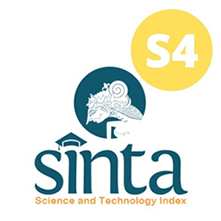Nine Channel Data Logger to Measure Temperature Distribution on Dry Stelizer based on Andoid system
Abstract
A temperature measurement in sterilization is needed to find out whether the temperature setting has been reached, because if the tool is operated continuously it will have an impact on the performance of the tool. Data logger is a tool used to record time and temperature by recording. The purpose of this research is to develop technological advances with remote or automated systems that can monitor changes in temperature rise and fall. This study uses 9 types of K-type thermocouple sensors as temperature gauges which are placed at 9 specified points. A thermocouple is connected to the MAX6675 module for conversion which initially detects temperature into digital form data. Data processing uses the Arduino Mega 2560 system and the Arduino programming software processor. HC-05 is used as a data transmission of measured results that have been read where the results are displayed on Android using the Blynk application, the data sent will be in the form of Excel. This tool uses a temperature comparison from the MEMMERT UN 55 incubator in the microbiology laboratory. The error value contained in the 100°C temperature adjustment is 2.6% at a temperature of 1, the smallest error at temperatures 7 and 8 is 0.2% due to the location of the sensor far from the heater. The error value at a temperature of 150°C is 1.7%, the smallest error at temperature 5 is 0.3%, 0.5%. The error value at a temperature of 200°C is 1.8%, the smallest error at temperature 0.5%. This research is expected to make it easier for users to simultaneously monitor temperature and simplify data processing to obtain an accuracy error value in the unit under test (UUT).

This work is licensed under a Creative Commons Attribution-ShareAlike 4.0 International License.
Authors who publish with this journal agree to the following terms:
- Authors retain copyright and grant the journal right of first publication with the work simultaneously licensed under a Creative Commons Attribution License that allows others to share the work with an acknowledgement of the work's authorship and initial publication in this journal.
- Authors are able to enter into separate, additional contractual arrangements for the non-exclusive distribution of the journal's published version of the work (e.g., post it to an institutional repository or publish it in a book), with an acknowledgement of its initial publication in this journal.
- Authors are permitted and encouraged to post their work online (e.g., in institutional repositories or on their website) prior to and during the submission process, as it can lead to productive exchanges, as well as earlier and greater citation of published work (See The Effect of Open Access).











